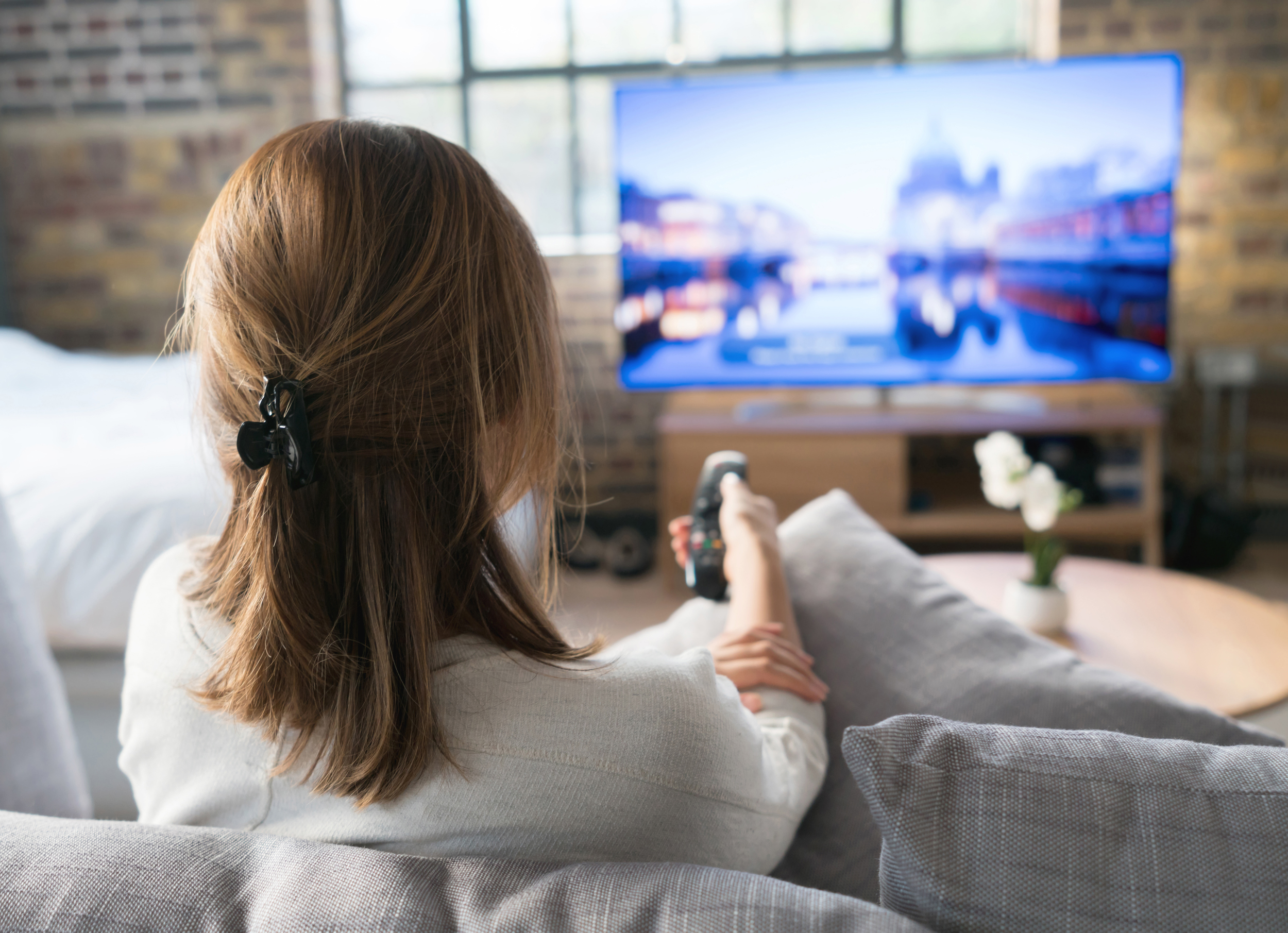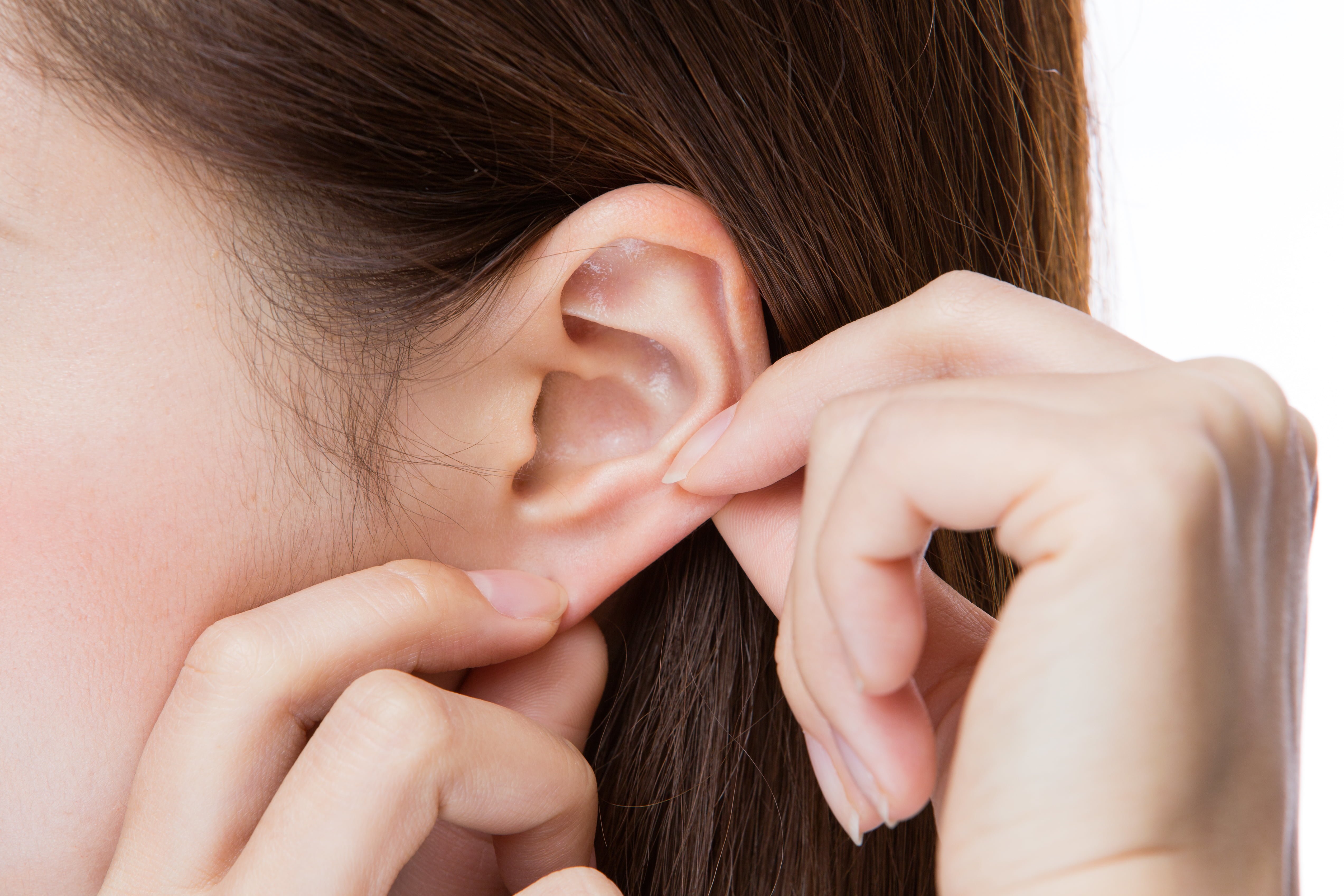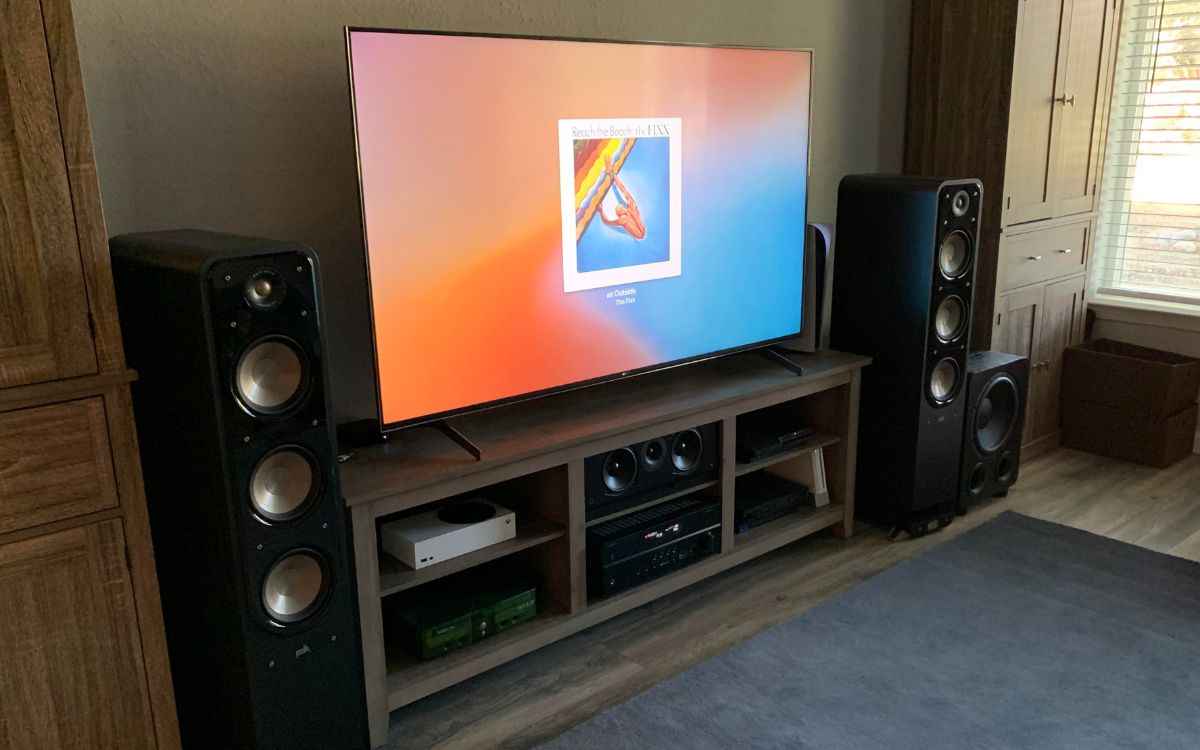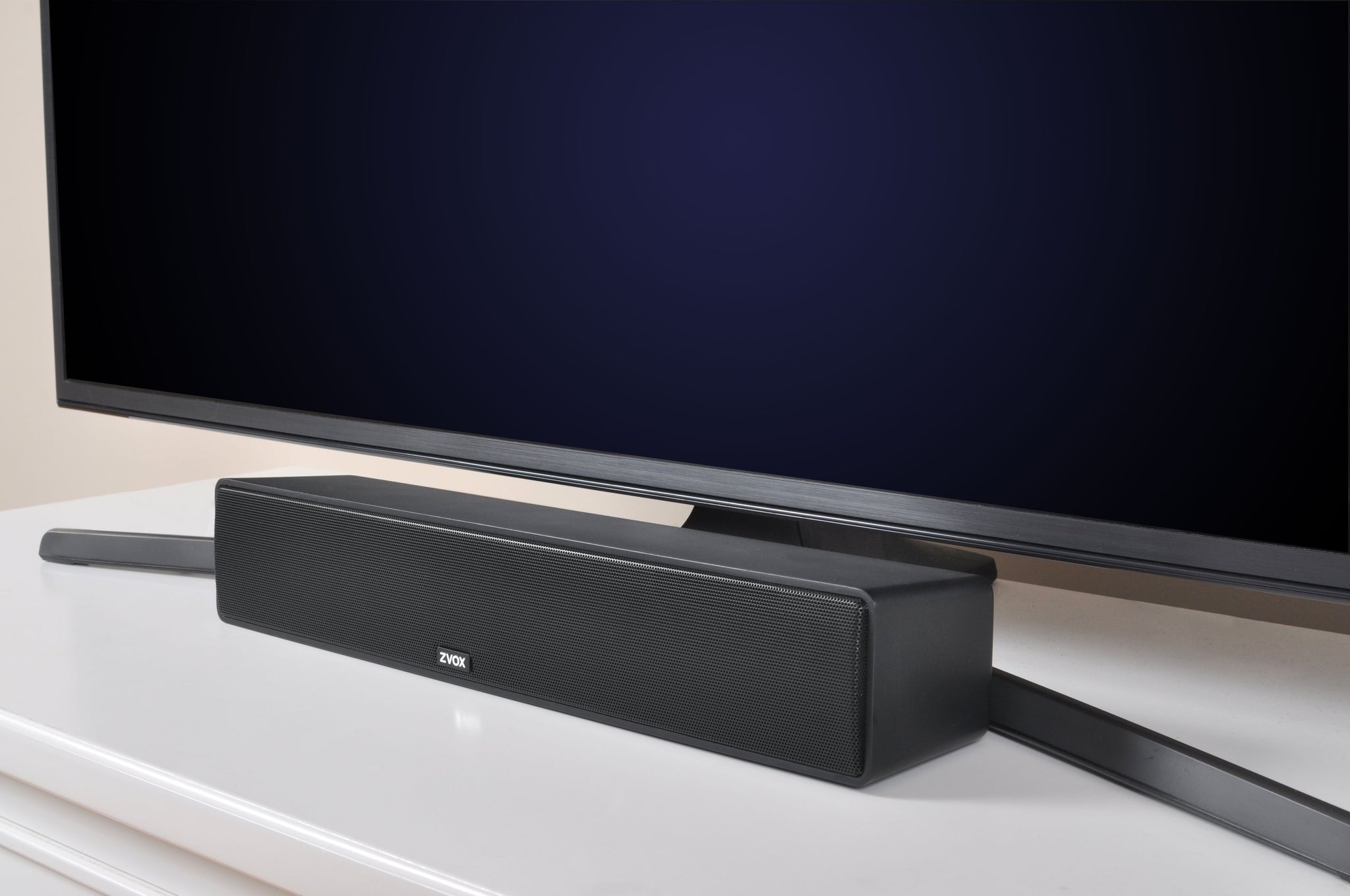Home>Production & Technology>Sound>How To Fix Muffled Sound On TV


Sound
How To Fix Muffled Sound On TV
Modified: January 22, 2024
Learn how to fix muffled sound on your TV with our simple troubleshooting guide. Say goodbye to poor audio quality and enjoy crystal-clear sound again.
(Many of the links in this article redirect to a specific reviewed product. Your purchase of these products through affiliate links helps to generate commission for AudioLover.com, at no extra cost. Learn more)
Table of Contents
Introduction
Having muffled sound on your TV can be quite frustrating, as it affects your viewing experience and makes it difficult to enjoy your favorite movies, shows, or games. If you’re struggling with sound issues on your television, there could be various causes behind the muffled audio.
In this article, we will explore the common causes of muffled sound on TV and provide you with some troubleshooting steps to fix the issue. Whether it’s a problem with the audio settings, equalizer settings, external devices, or speaker hardware, we’ve got you covered. By following these steps, you can regain clear and crisp sound on your TV and enjoy your entertainment without any disturbances.
Before diving into the solutions, it’s important to note that every TV model and brand may have slightly different audio settings and configurations. However, the troubleshooting steps covered in this article are general and apply to most TVs. So, let’s dive in and unravel the mystery behind the muffled sound on your TV.
Common Causes of Muffled Sound on TV
Muffled sound on a TV can stem from various factors, some of which include:
- Audio Settings: Incorrect audio settings can lead to distorted or muffled sound. This can occur if the TV is set to a surround sound mode and your audio device is not compatible, or if the audio output format is not properly configured.
- Equalizer Settings: The equalizer settings on your TV may be misconfigured, resulting in muffled audio. If the bass or treble levels are set too high or too low, it can impact the overall sound clarity.
- External Devices and Cables: Poorly connected or faulty external devices, such as game consoles, soundbars, or cable boxes, can cause muffled sound. Additionally, damaged or low-quality cables can negatively impact the audio signal.
- Dirty or Damaged Speakers: Dust or debris can accumulate on the speakers over time, causing muffled sound. Additionally, physical damage to the speaker components can also affect the audio quality.
- Audio Output Issues: Problems with the audio output of the TV, such as faulty ports or incorrect audio settings, can result in muffled sound. Incorrectly connected audio cables or a malfunctioning audio output can also be responsible.
- Factory Settings: In some cases, incorrect settings or software glitches may be causing the muffled sound. Resetting the TV to its factory settings can often resolve such issues.
It’s worth noting that muffled sound can be caused by one or a combination of these factors. Identifying the specific cause will help you determine the most effective solution to fix the issue. In the following sections, we will explore troubleshooting steps for each potential cause in detail.
Checking Audio Settings
One of the first steps in troubleshooting muffled sound on your TV is to check the audio settings. Here’s what you can do:
- Audio Output Format: Ensure that the audio output format is correctly set. Check if there are any supported audio formats mentioned in the TV’s manual or settings menu. Select the appropriate format that matches your audio device or speaker system.
- Surround Sound: If your TV has a surround sound feature, make sure it is compatible with your audio setup. Some programs or devices may not support surround sound, resulting in muffled audio. Switch to stereo or standard audio mode and see if the sound quality improves.
- Volume Levels: Adjust the volume levels to check if low volume is causing the muffled sound. Sometimes, the sound may seem muffled if the volume level is too low. Increase the volume gradually and see if it improves the sound clarity.
- Audio Delay: In certain cases, an audio delay can cause the sound to appear muffled. It may happen if the audio is out of sync with the video. Check the TV’s audio delay settings and adjust them accordingly.
- Audio Enhancements: Some TVs come with built-in audio enhancements like virtual surround sound or bass boost. These settings can alter the sound quality and may result in muffled audio. Disable or adjust these enhancements to see if it improves the sound clarity.
By checking and adjusting the audio settings on your TV, you can often resolve muffled sound issues. Remember to consult your TV’s user manual or the manufacturer’s website for specific instructions on adjusting audio settings for your particular model.
Adjusting the Equalizer Settings
If the sound on your TV is still muffled after checking the audio settings, the next step is to adjust the equalizer settings. The equalizer allows you to fine-tune the audio frequencies to achieve optimal sound quality. Here’s how you can do it:
- Access the Equalizer: Go to the audio settings menu on your TV and look for the equalizer settings. It may be labeled as “Sound Mode,” “Audio Settings,” or something similar.
- Tweak the Bass and Treble: Adjust the bass and treble levels to find the right balance. If the bass is set too high, it can make the sound boomy and muffled. If the treble is set too low, it can make the sound dull and lacking clarity. Experiment with different settings to achieve a well-rounded sound.
- Reset to Default: If you have previously made adjustments to the equalizer settings, consider resetting them to default. This will remove any custom settings that might be causing the muffled sound. Use the default settings as a starting point and make minor adjustments as needed.
- Preset Sound Modes: Many TVs offer preset sound modes, such as “Movie,” “Music,” or “Sports.” These modes are designed to enhance audio based on the content type. Try switching between different sound modes to see if any of them improve the sound quality.
- Save the Settings: Once you have made adjustments to the equalizer settings, make sure to save them. Some TVs may have a “Save” or “Apply” button, while others may automatically save the changes. Refer to your TV’s user manual for specific instructions on saving equalizer settings.
By experimenting with the equalizer settings, you can fine-tune the audio frequencies and potentially eliminate the muffled sound on your TV. Keep in mind that every TV model may have different equalizer options, so explore the available settings on your particular TV to achieve the desired sound quality.
Checking External Devices and Cables
If you’re still experiencing muffled sound on your TV, it’s time to inspect the external devices and cables that are connected to it. Here are some steps you can take:
- Verify Connections: Ensure all cables are securely connected to their respective ports. Make sure the audio cables, such as HDMI or optical cables, are properly plugged into the correct input/output ports on both the TV and the external device.
- Replace or Test Cables: If you suspect that faulty or damaged cables are causing the issue, try using a different set of cables to connect your external device to the TV. This can help determine whether the cables are the culprit.
- Bypass External Devices: Disconnect any external sound systems or devices that are connected to your TV, such as soundbars, audio receivers, or gaming consoles. Connect the TV directly to a different set of speakers or use its internal speakers to see if the sound quality improves. This will help identify if the issue is specific to the external devices or cables.
- Troubleshoot Individual Devices: If the muffled sound occurs only when using a particular external device, troubleshoot that device individually. Check its audio settings, cables, and connections to ensure they are functioning properly.
- Power Cycle Devices: Sometimes, a simple power cycle of the TV and external devices can resolve audio issues. Turn off all the devices, unplug them from the power source, wait for a few minutes, and then plug them back in. Power them on and check if the sound quality improves.
By checking the external devices and cables, you can identify any potential issues that might be causing muffled sound on your TV. Ensure all connections are secure, cables are functioning correctly, and try bypassing external devices to narrow down the problem. Sometimes, the solution might be as simple as replacing a faulty cable or reconnecting devices properly.
Cleaning or Replacing the Speakers
If you have already checked the audio settings and external devices, but are still experiencing muffled sound on your TV, it’s worth considering the condition of the speakers themselves. Here are some steps you can take:
- Clean the Speakers: Over time, dust and debris can accumulate on the surface of the speakers, affecting the sound quality. Use a gentle brush or a microfiber cloth to carefully clean the speakers. Be sure not to apply excessive pressure that could damage the speakers. Removing the buildup can often restore better audio clarity.
- Inspect for Physical Damage: Carefully examine the speakers for any visible physical damage, such as dents or tears in the speaker cone. Physical damage to the speakers can impact their performance and result in muffled sound. If you notice any significant damage, it may be necessary to replace the speakers.
- Consider External Speakers: If the internal speakers of your TV are damaged or unable to produce clear sound, you might consider purchasing external speakers. External speakers can significantly enhance the audio quality and provide a more immersive experience. Connect them to your TV using the appropriate audio output ports, and adjust the audio settings accordingly.
- Consult a Professional: If you’re unsure about the condition of your TV’s speakers or if you have tried cleaning them without success, it may be best to consult a professional technician. They can assess the speakers and provide guidance on whether repair or replacement is necessary.
Cleaning the speakers can often improve sound quality, especially if they are dusty or dirty. However, if you find that the speakers are physically damaged or your TV’s internal speakers are unable to produce clear sound, it may be necessary to replace them. External speakers are a great alternative if you want to enhance the audio performance and enjoy better sound clarity while watching TV.
Troubleshooting the Audio Output
If you’ve tried adjusting the audio settings, checking external devices and cables, and cleaning or replacing the speakers, but the sound on your TV is still muffled, it’s time to troubleshoot the audio output itself. Here’s what you can do:
- Test Different Audio Outputs: If your TV has multiple audio output options, such as HDMI, optical, or RCA, try connecting your TV to different audio output sources to see if the muffled sound persists. This can help determine if a specific audio output port is causing the issue.
- Update Audio Drivers: If you’re using external speakers or a sound system, ensure that the audio drivers are up to date. Check the manufacturer’s website for any driver updates and install them accordingly. Outdated or incompatible drivers can lead to sound quality issues.
- Disable Audio Effects: Some TVs come with built-in audio effects or enhancements that can affect the sound quality. Disable any sound effects, such as virtual surround sound or Dolby enhancements, to see if it improves the audio clarity. These effects may sometimes result in muffled sound or distortions.
- Switch to Stereo Audio: If your TV offers different audio modes, switch to stereo audio instead of surround sound. Surround sound modes may not always be compatible with your audio devices or programming, leading to muffled sound. Stereo audio can provide clearer sound reproduction in such cases.
- Update TV Firmware: Check if there are any firmware updates available for your TV. Manufacturers often release firmware updates to address software bugs and improve performance, including audio issues. Refer to your TV’s user manual or the manufacturer’s website for instructions on updating the firmware.
Troubleshooting the audio output involves testing different audio sources, updating drivers, disabling audio effects, and ensuring that your TV’s firmware is up to date. By following these steps, you can identify and resolve any issues related to the audio output, which may be causing the muffled sound on your TV.
Resetting the TV to Factory Settings
If you’ve exhausted all other troubleshooting steps and are still experiencing muffled sound on your TV, you may consider resetting the TV to its factory settings. Resetting the TV can help eliminate any software glitches or incorrect settings that could be causing the audio issue. Here’s how you can do it:
- Access the Settings Menu: Navigate to the settings menu on your TV. Look for options like “System,” “Settings,” or “Setup.”
- Locate the Reset Option: Within the settings menu, find the option to reset the TV. It may be labeled as “Factory Reset,” “Reset All Settings,” or something similar.
- Confirm the Reset: Before proceeding with the reset, the TV may prompt you for confirmation. Read the on-screen instructions carefully and select the option to confirm the reset.
- Wait for the Reset: Once you confirm the reset, the TV will begin the process. It may take a few minutes for the reset to complete. Avoid interrupting the process by turning off the TV or unplugging it.
- Reconfigure the TV: After the reset is finished, the TV will restart with the default factory settings. You will need to go through the initial setup process and reconfigure any personalized settings, including network connections and picture/audio settings.
Note that resetting the TV to factory settings will erase all personal settings and preferences, so make sure to take note of any customized settings before proceeding. Additionally, it’s always a good idea to consult the user manual or the manufacturer’s website for specific instructions on performing a factory reset for your particular TV model.
Resetting the TV to its factory settings can often resolve persistent muffled sound issues that might be caused by software glitches or incorrect settings. It’s a final resort when all other troubleshooting steps have failed. However, if the muffled sound persists even after the reset, it may be best to seek technical support from the TV manufacturer or a professional technician.
Contacting Technical Support
If you have tried all the troubleshooting steps and the muffled sound issue on your TV still persists, it might be time to seek technical support from the manufacturer or a professional technician. Here are a few steps you can take:
- Refer to the User Manual: Consult your TV’s user manual for information on technical support. Most manuals provide contact details for customer support or a dedicated technical support helpline.
- Visit the Manufacturer’s Website: Go to the manufacturer’s website and look for a support section. Many manufacturers offer online resources such as troubleshooting guides, FAQs, and forums where you can find solutions to common issues.
- Contact Customer Support: Reach out to the TV manufacturer’s customer support directly. Explain the issue you are facing, the troubleshooting steps you have already tried, and any error messages you may have encountered. They will provide you with further guidance specific to your TV model.
- Consider Professional Technicians: If you prefer hands-on assistance, you can also contact a professional technician who specializes in TV repairs. They have the expertise and specialized equipment to diagnose and fix hardware-related issues. Ensure that the technician is authorized by the TV manufacturer or is reputable in their field.
- Provide Relevant Information: When contacting technical support or a professional technician, be prepared to provide specific details about your TV model, the symptoms of the muffled sound, and the steps you have already taken to troubleshoot the issue. The more information you can provide, the easier it will be for them to assist you.
Technical support can provide further guidance or suggest advanced troubleshooting steps based on the specifics of your TV model and the issue you are facing. They may be able to offer software updates, firmware patches, or even arrange for a repair or replacement if necessary. Remember to remain patient and polite when dealing with technical support to ensure a positive experience.
If your TV is still under warranty, be sure to mention that when contacting technical support, as it may entitle you to free repairs or replacements. Keep in mind that if the muffled sound issue persists even after seeking technical support, it’s possible that there may be a more serious hardware problem with your TV that requires professional intervention.
Conclusion
Muffled sound on your TV can be a frustrating experience, but by following the troubleshooting steps outlined in this article, you should be able to identify and resolve the issue. By checking the audio settings, adjusting the equalizer, examining external devices and cables, cleaning or replacing the speakers, troubleshooting the audio output, and even resetting the TV to factory settings, you can eliminate common causes of muffled sound.
However, if you have tried all the troubleshooting steps and the muffled sound issue still persists, it’s recommended to seek technical support from the manufacturer or a professional technician. They can provide further guidance based on the specifics of your TV model and the issue you are facing. Remember to provide them with relevant information and be patient and polite in your interactions.
Lastly, when dealing with audio issues on your TV, it’s important to regularly update your TV firmware, keep your external devices and cables in good condition, and engage in routine maintenance such as cleaning the speakers. These preventative measures can help minimize the chances of experiencing muffled sound or other audio-related problems in the future.
We hope that this article has been helpful in troubleshooting and resolving the muffled sound issue on your TV. Now, you can enjoy your favorite movies, shows, and games with clear and immersive sound once again!











